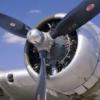
Sign in to follow this
Followers
0

FSX-MS Making the FSX G-21 Goose Function and Fly Like the G-21 Goose
By
Kuckoo, in MS FSX | FSX-SE Forum


By
Kuckoo, in MS FSX | FSX-SE Forum